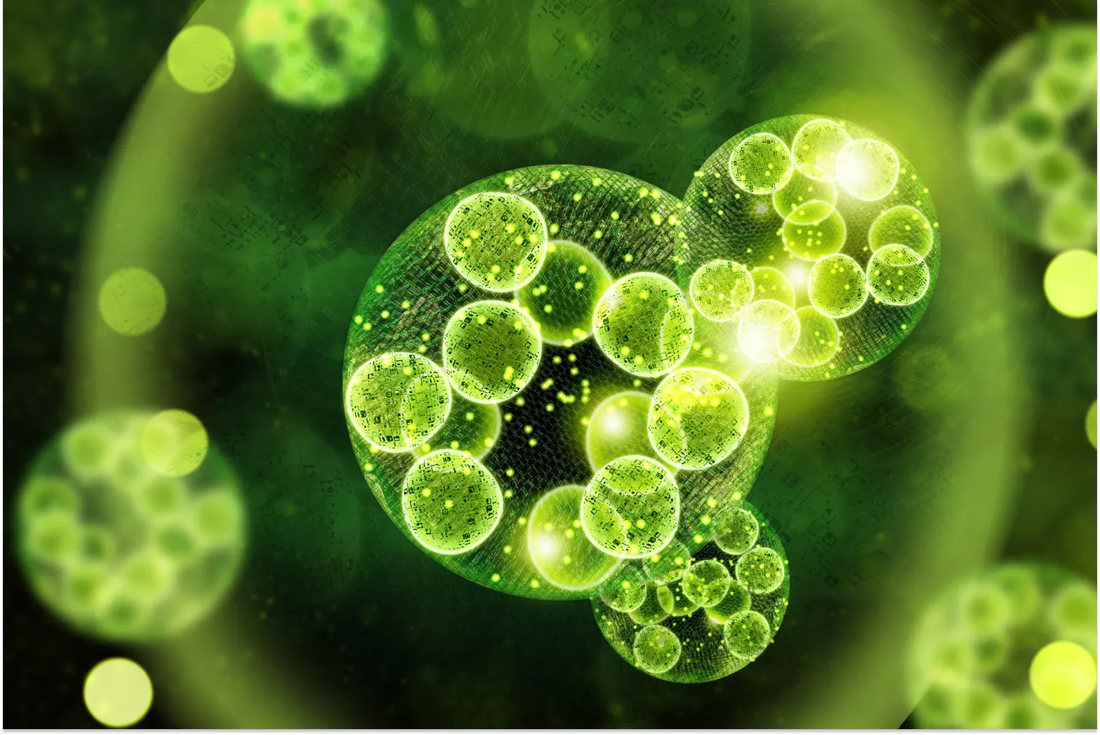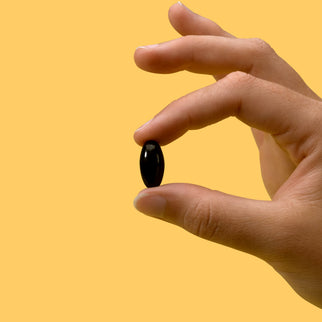Maybe you've probably heard about the importance of algae — those microscopic green organisms are responsible for so much more than just that slippery feeling underfoot at the beach. From the unseen depths of our oceans to cutting-edge research labs, algae are making waves, literally and metaphorically!
Today, we're zeroing in on one special algae that’s not just another face in the crowd: Schizochytrium. This tiny powerhouse has implications not only for our planet but for industries such as sustainable nutrition (hey, that's us), biofuels, and even biotechnology.
What Is Schizochytrium Algae?
Schizochytrium plays a crucial role in nutrient cycling in aquatic ecosystems. As small as it may be, this humble microorganism is a titan in the marine ecosystem.
Acting as a nutrient recycling powerhouse, Schizochytrium performs the essential function of breaking down organic matter, converting it into critical nutrients, and serving as nourishment for various aquatic organisms. These creatures are then consumed by larger fish, creating a sustainable loop in the marine food chain.
When it comes to industrial applications, Schizochytrium boasts a staggering range of uses — producing biofuels, serving as a key ingredient in animal feed, and, most importantly, being a rich source of omega-3 fatty acids.
Schizochytrium is being explored extensively for a variety of sustainable solutions in biotechnology. Moreover, its role in waste management cannot be overlooked — given its ability to break down and metabolize various organic materials, it's seen as a promising champion in managing waste byproducts sustainably.
And it doesn't stop there; its adaptability and efficiency make it an attractive candidate for biotechnological research. Scientists are continuously working to unlock new applications and uses for this versatile microalgae, particularly in creating sustainable solutions that could change the future of industries ranging from nutrition to renewable energy.
How Does Schizochytrium Algae Differ from Other Algae?
Sure, all algae are fascinating in their own right, but Schizochytrium is a real standout. Tts unique morphology sets it apart — unlike other algae, Schizochytrium has a specialized cell structure that enables it to produce omega-3 fatty acids like DHA and EPA in remarkable quantities. If you think of the cell as a tiny factory, Schizochytrium's factory is designed for optimal omega-3 production, all thanks to its evolutionary architecture.
But what's even more astonishing are its metabolic pathways. Not all omega-3s are created equal. While some plants can produce ALA, a precursor to true omega-3, Schizochytrium specializes in churning out DHA and EPA. These are the omega-3 forms that your body can use most effectively without the need for conversion. It's like receiving a nutritional bonus just for choosing the right source.
In essence, the metabolic capabilities of Schizochytrium put it in an entirely different league. It offers a potent, direct source of omega-3 fatty acids that are more readily absorbed and utilized by the human body. This is a game-changer, especially for those who follow plant-based diets or are looking to shift towards more sustainable but effective nutritional options.
What Are the Health Benefits of Schizochytrium Algae?
When we talk about omega-3 fatty acids like DHA and EPA, we're talking about the VIPs of health and nutrition. These fats are pivotal for a wide range of physiological functions, from cognitive abilities to metabolic processes.
Let's break it down:
- Heart health: Many experts suggest that consuming a nutrient-rich diet, including adequate omega-3s, is often associated with supporting heart health. These fatty acids are thought to play a role in maintaining a balanced lipid profile.
- Brain function: DHA is often deemed a fundamental building block of the brain, associated with cognitive functions like memory, focus, and problem-solving. A balanced diet inclusive of DHA can, therefore, be a great way to support our brain's everyday tasks.
- Eye health: With age, experts suggest including DHA in our diet because of the conventional knowledge that points towards its beneficial role in maintaining eye health over time.
- Overall wellness: Omega-3 fatty acids are widely known to play an integral role in the body's functioning, supporting general well-being, and fostering a healthy lifestyle — especially when combined with regular exercise and a balanced diet. They're valuable nutrients that are delivered in a plant-based package by Schizochytrium algae.
All these benefits come in a plant-based package, thanks to Schizochytrium algae. This makes it an excellent choice for everyone — vegan, vegetarian, keto, or anyone conscious about their health.
How Is Schizochytrium Algae Cultivated?
Cultivating Schizochytrium isn’t exactly like growing tomatoes in your backyard. It needs specific conditions — it is grown in fermenters in the dark.
In an effort to preserve all that is good and pure about Schizochytrium, the algae is harvested mechanically or through chemical-free methods. This ensures that the final product is as nature intended: rich, potent, and free from contaminants.
How Sustainable Is Schizochytrium Algae Production?
The fermenters used to grow Schizochytrium are capable of such high densities that the salts are typically part of the media formulation. The growing process typically uses freshwater and relies on a carbon source (like corn syrup or sugar cane), meaning it is not as sustainable as open-pond algae cultivation.
At iwi life, cheering from the sidelines is not our way — we’re in the game, playing our part in this eco-friendly movement. Our own strain of Nannochloropsis algae is cultivated using sustainable practices that have our planet’s approval.
The potential of algae farming doesn't stop at reducing environmental impact. It's also being viewed as a robust contributor to sustainable agriculture and food security, ensuring nutritious food sources that leverage, not harm, natural resources.
In fact, research indicates that along with efficient land and water usage, algae farming also plays a role in preserving biodiversity and helping combat climate change. The sustainability credentials of Schizochytrium cultivation are a testament to a promising future of food production that cares for the planet.
What Does the Future Hold for Schizochytrium Algae?
We’re looking at possibilities beyond dietary supplements, too. Innovation is underway to explore Schizochytrium's potential in producing functional foods, additives for skincare products, and even environmentally-friendly plastics.
A Final Word
The future for Schizochytrium algae shines brighter than a midsummer’s day. We're beyond thrilled to be part of this transformative journey towards more sustainable, plant-based health solutions.
Here at iwi life, our enthusiasm knows no bounds when it comes to the uncharted territories ahead and the pivotal role that Schizochytrium algae will play in them. This isn't merely about following a trend; it's about pioneering a whole new frontier in sustainable, potent nutrition.
Together, we can champion a healthier, more sustainable future, one algae at a time.
Sources:
Developing Algae as a Sustainable Food Source | Frontiers
Aquatic Food Webs | National Oceanic and Atmospheric Administration
Prospects on the Use of Schizochytrium sp. to Develop Oral Vaccines | Frontiers





















